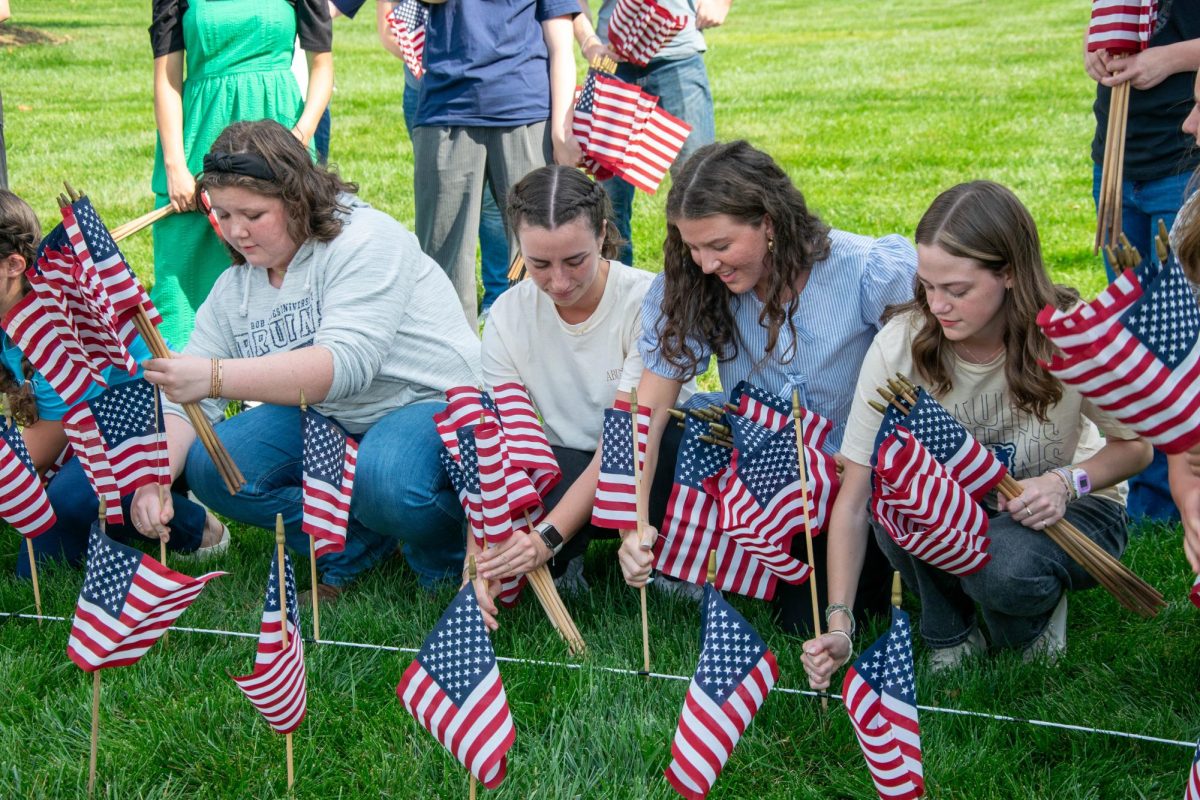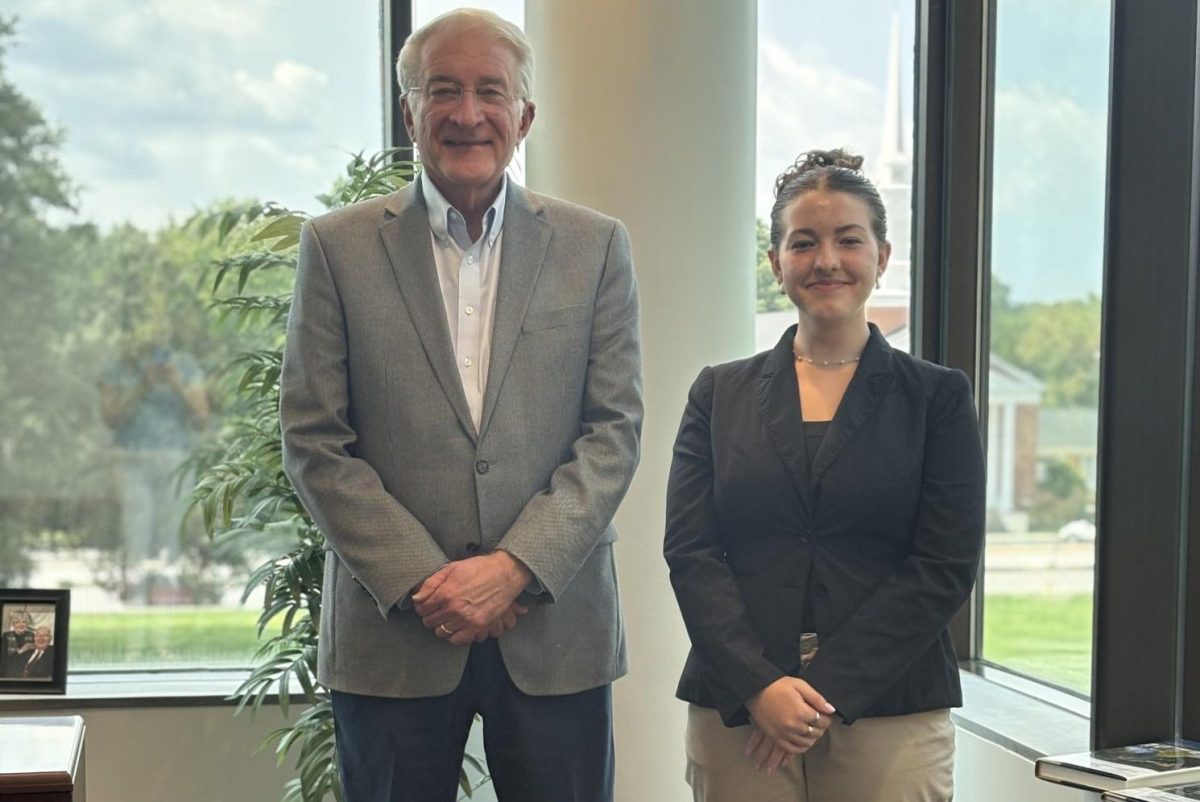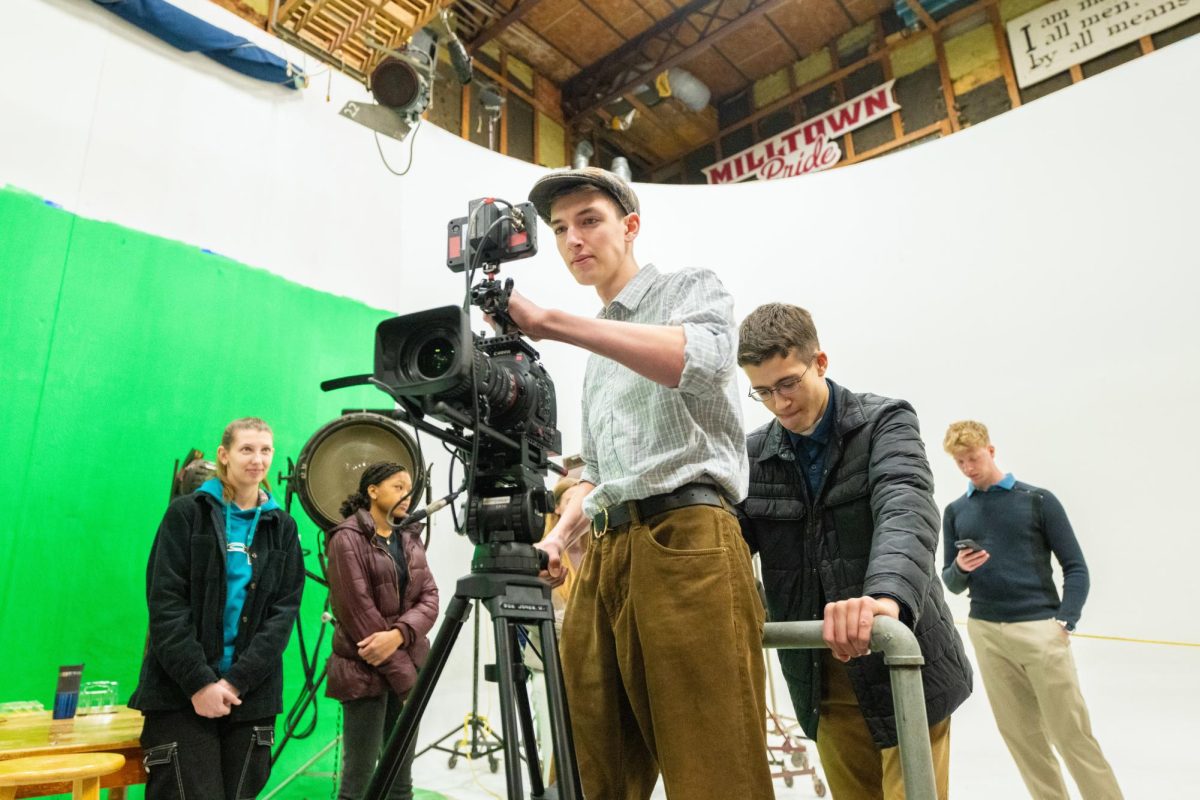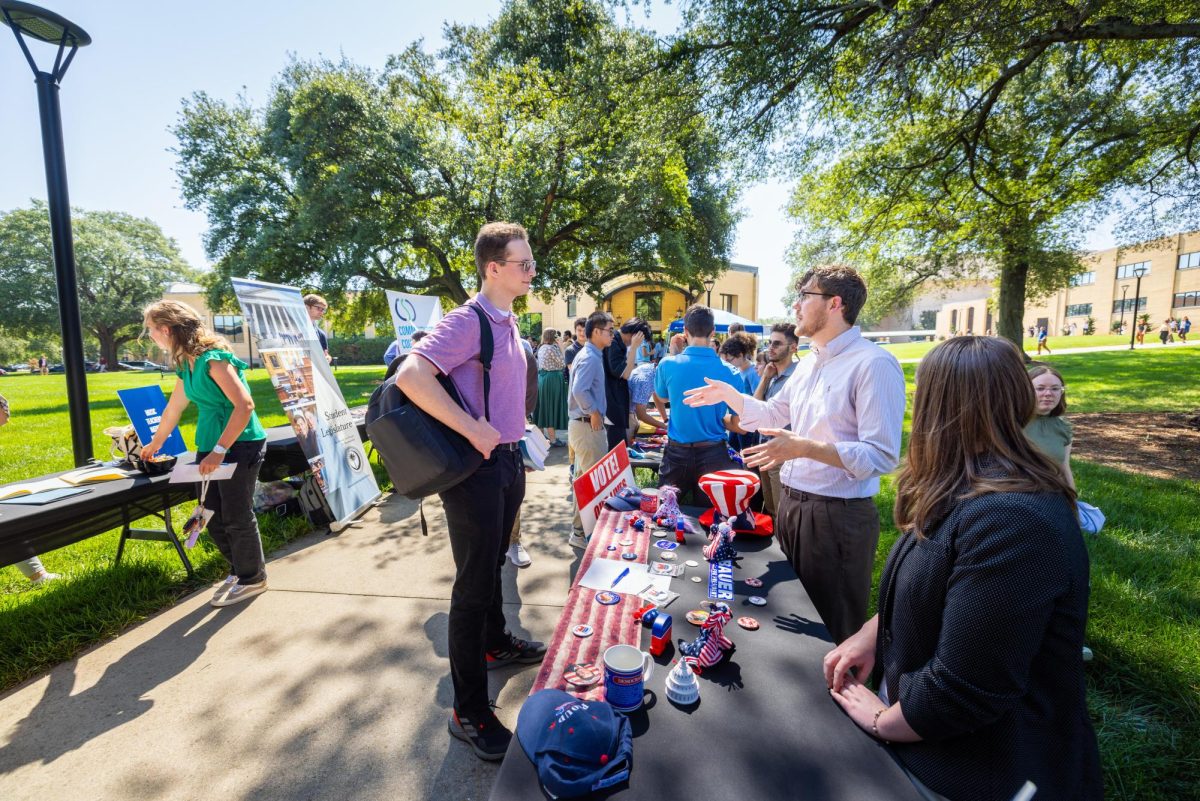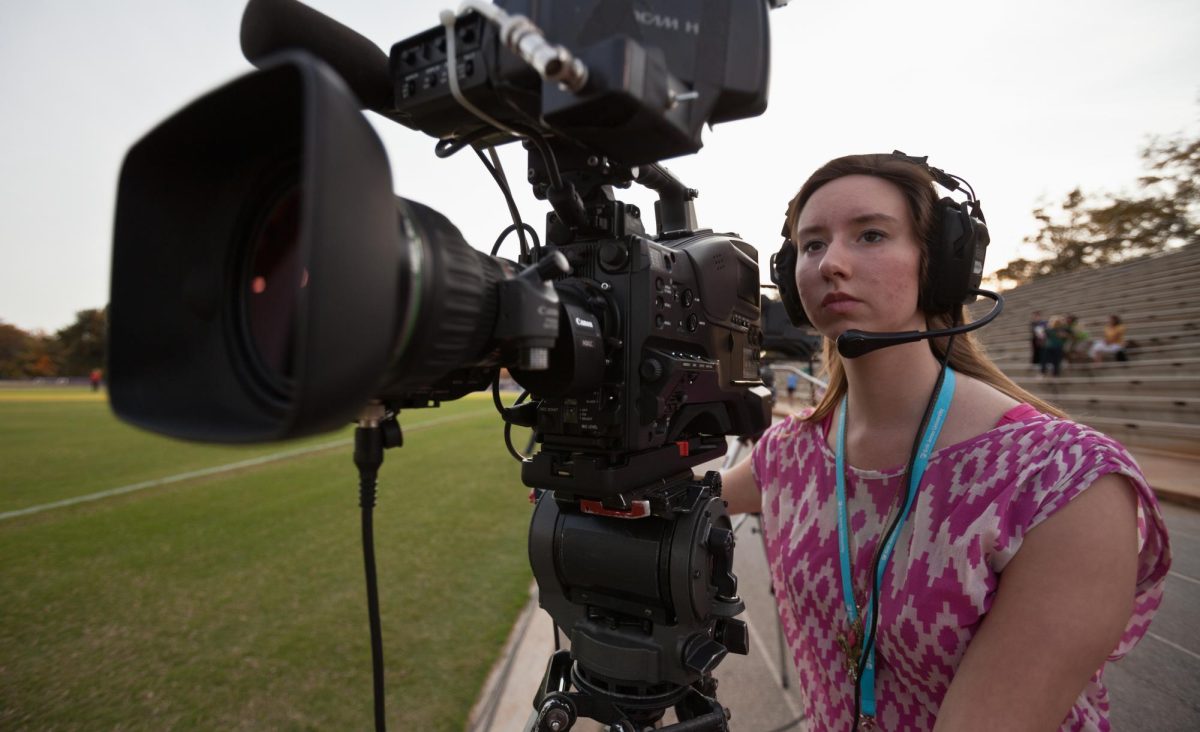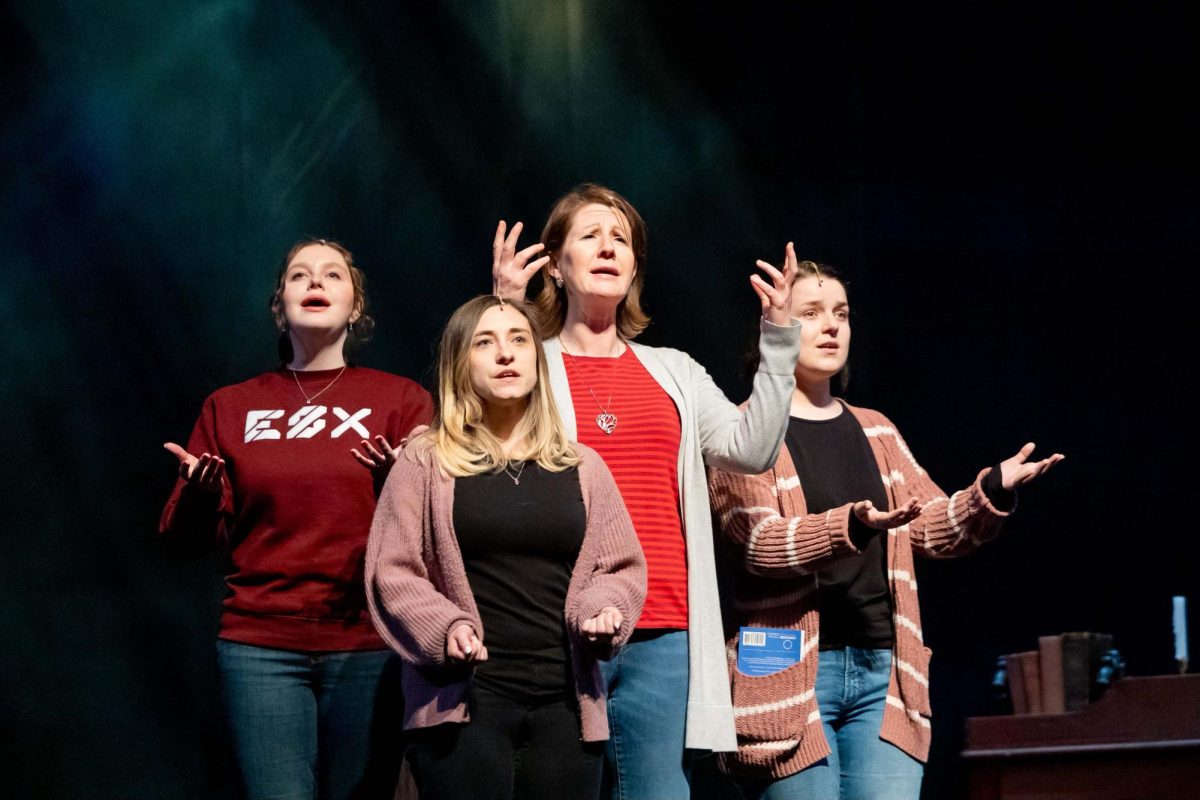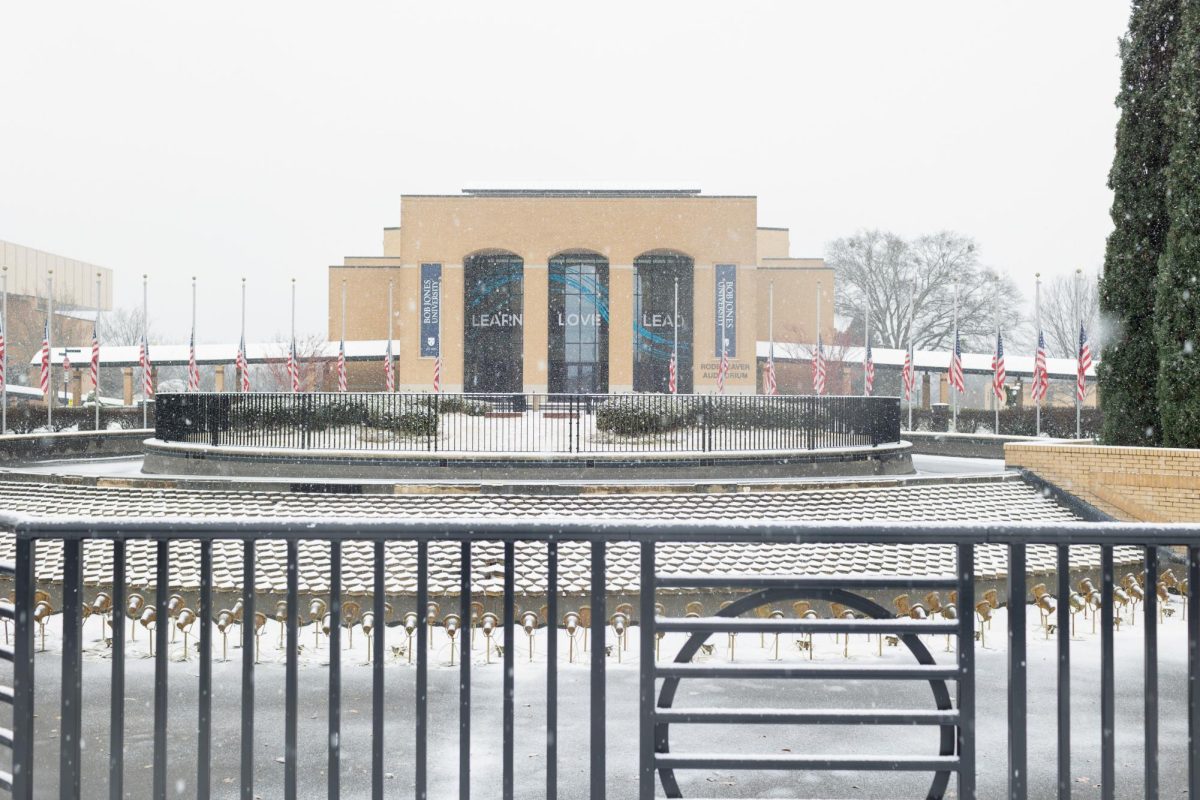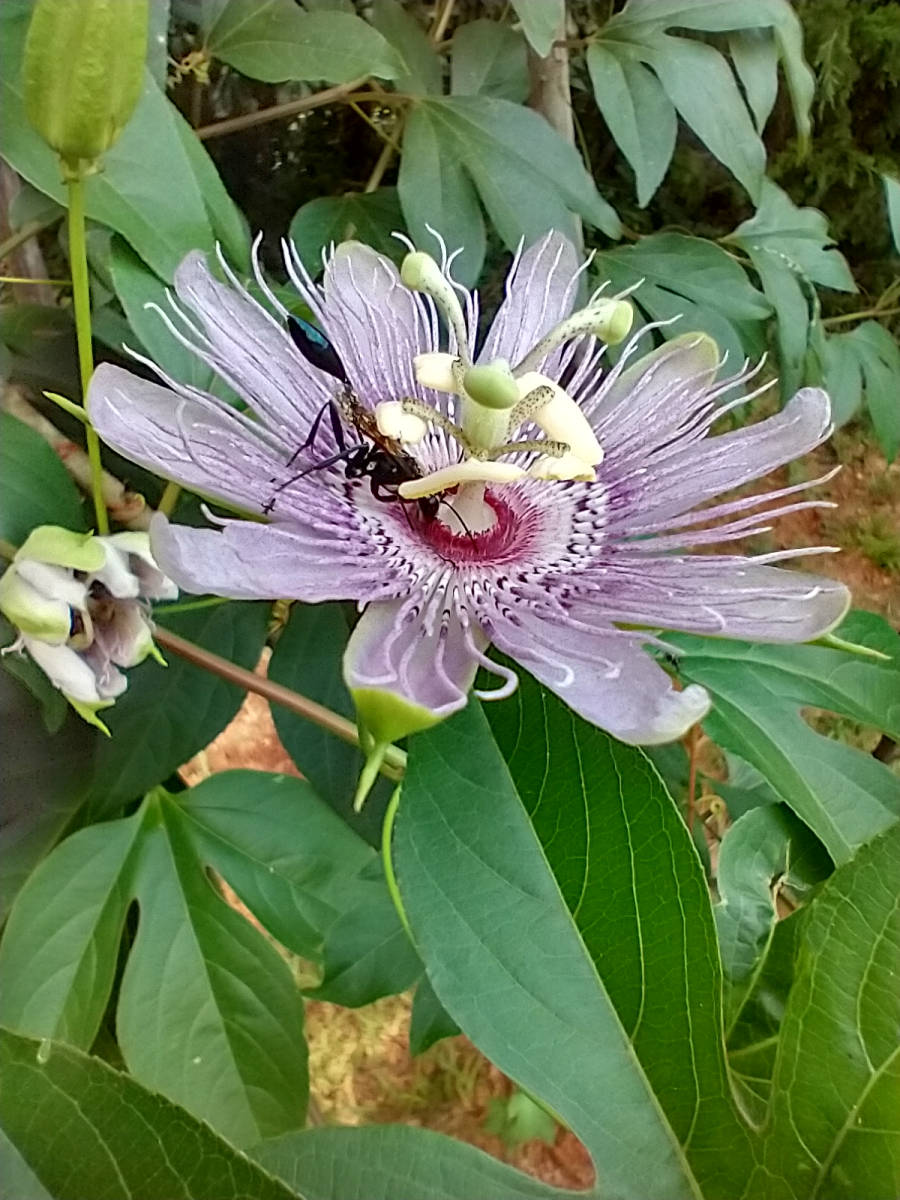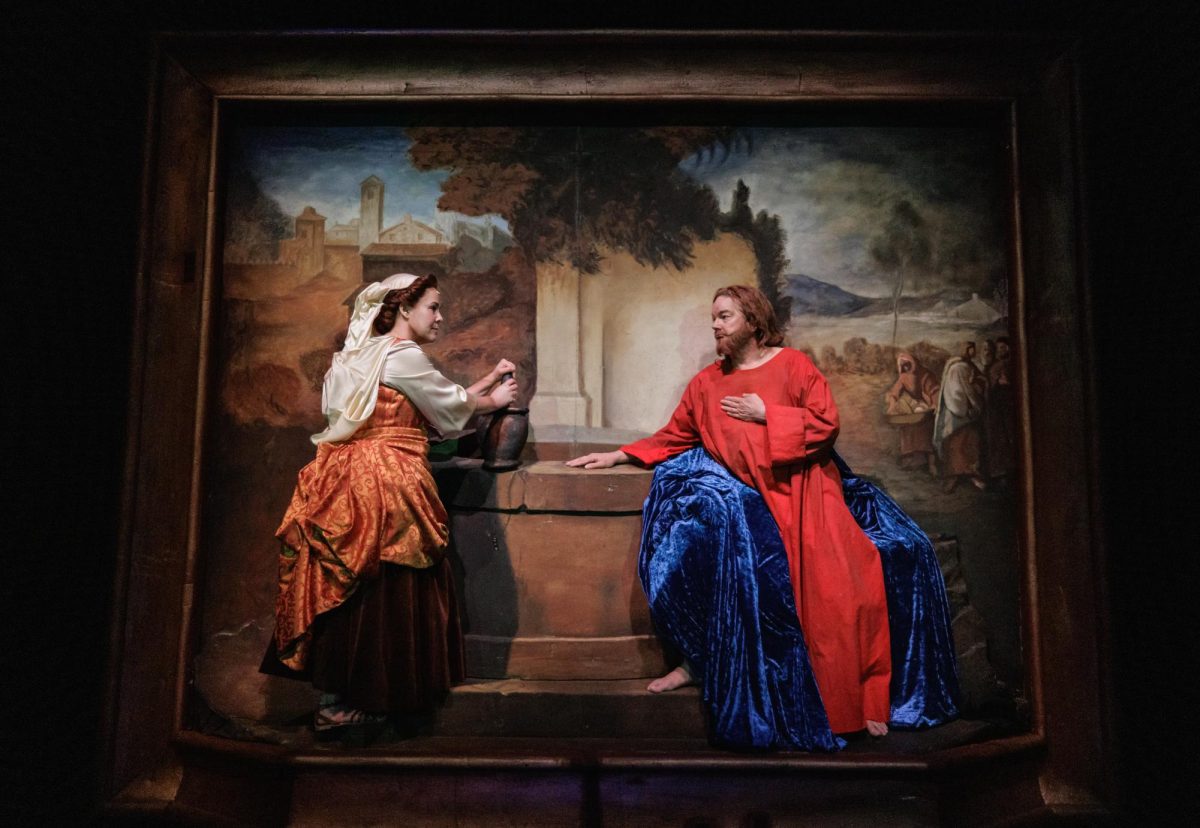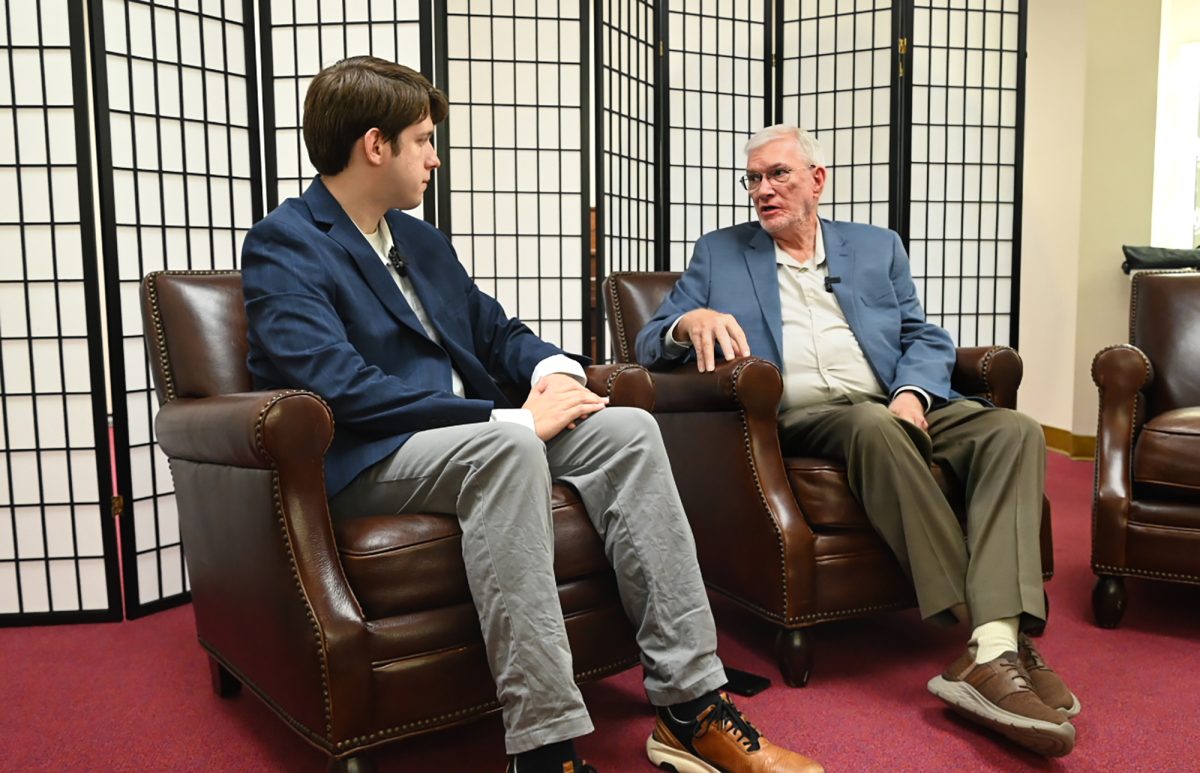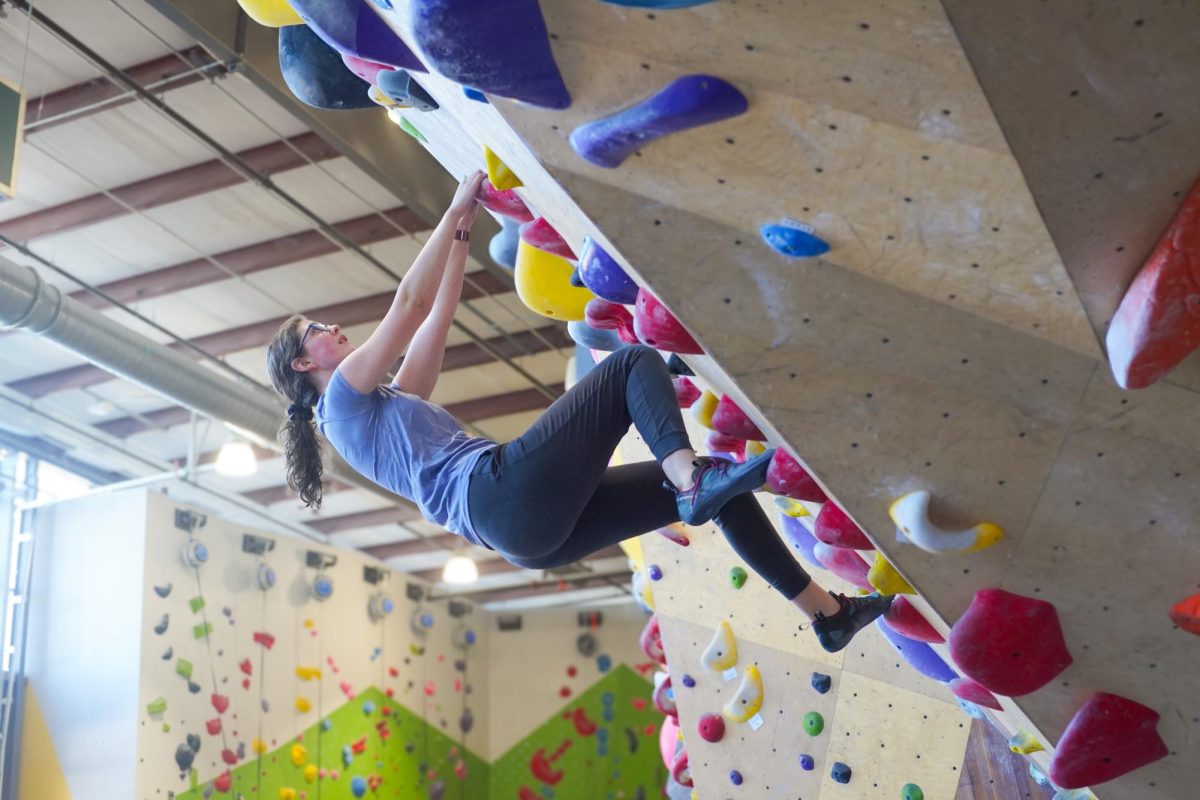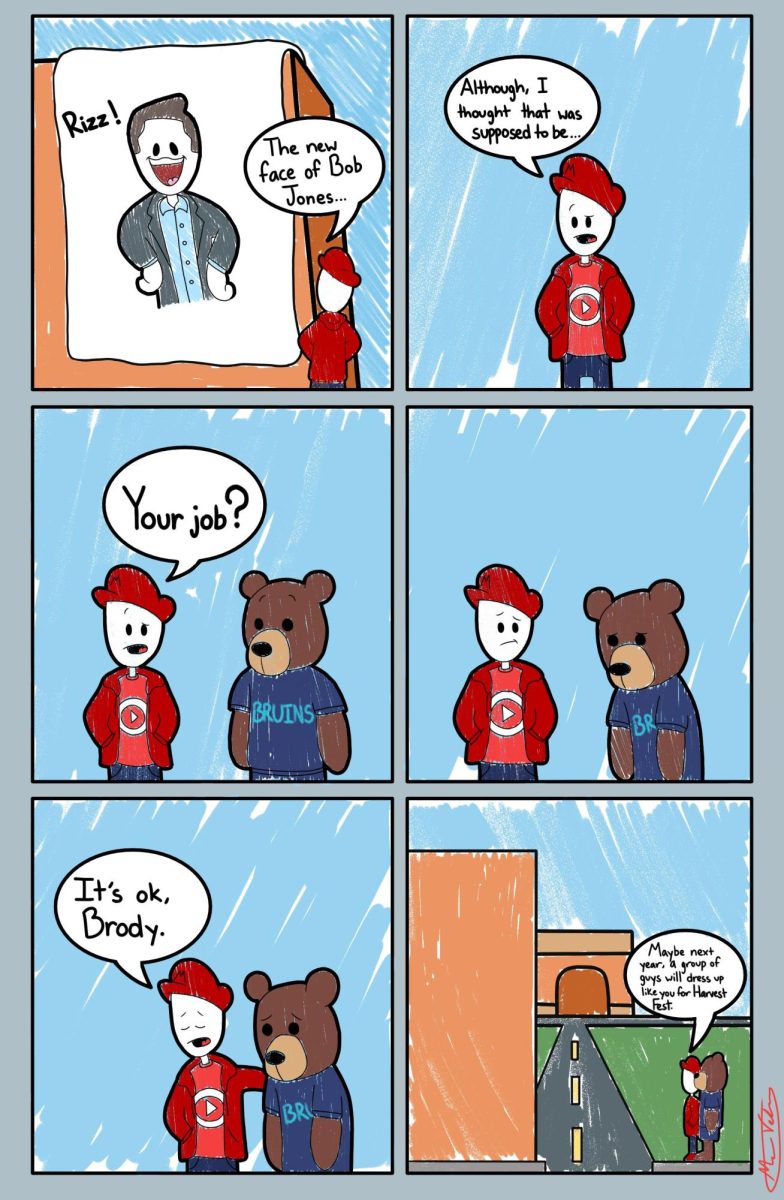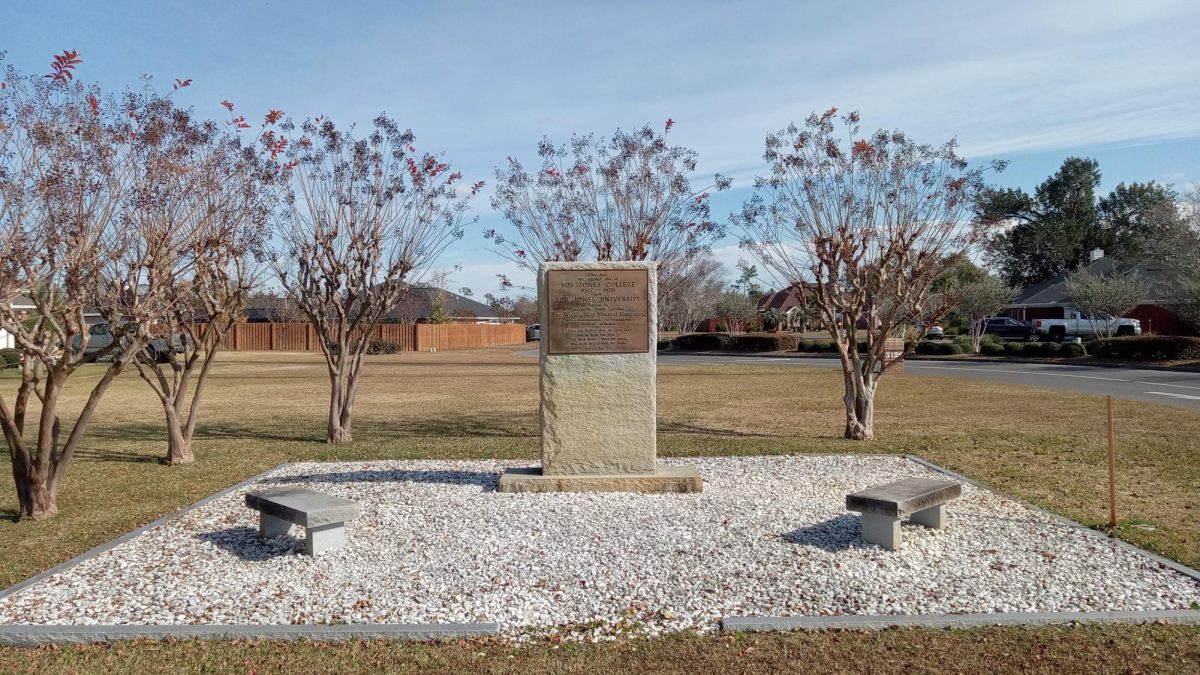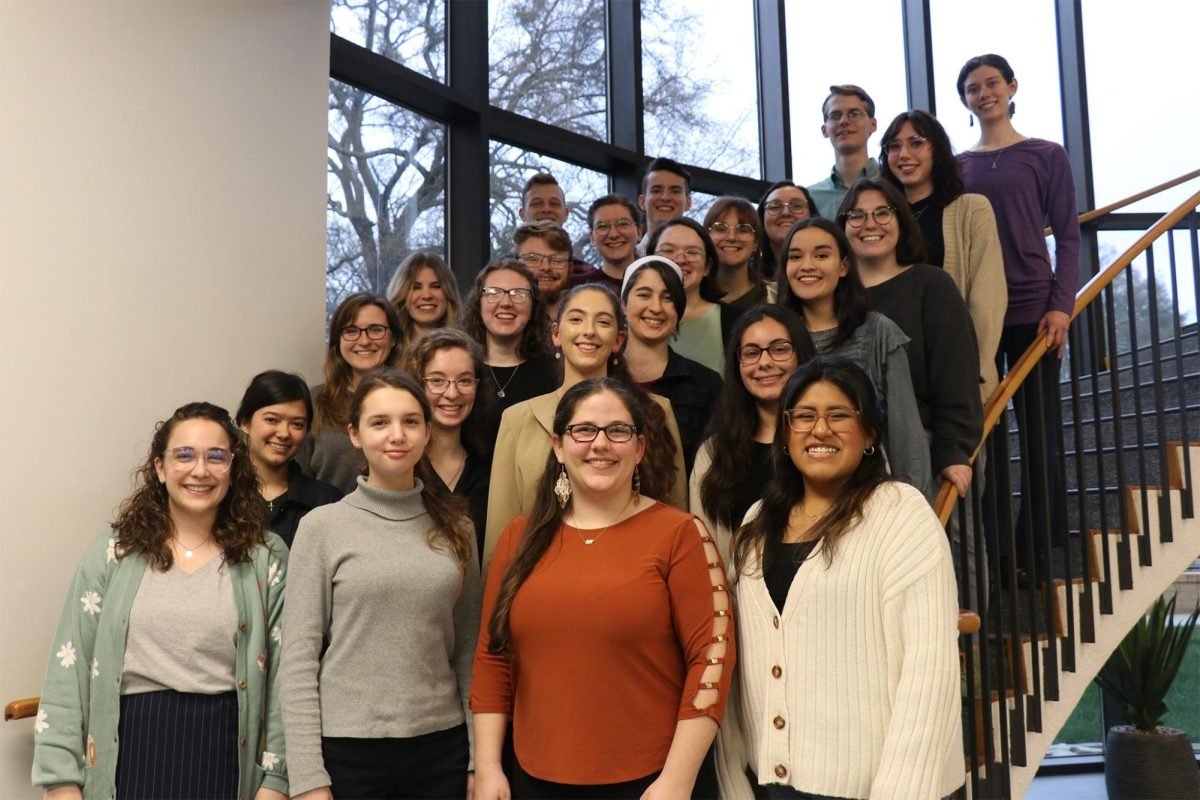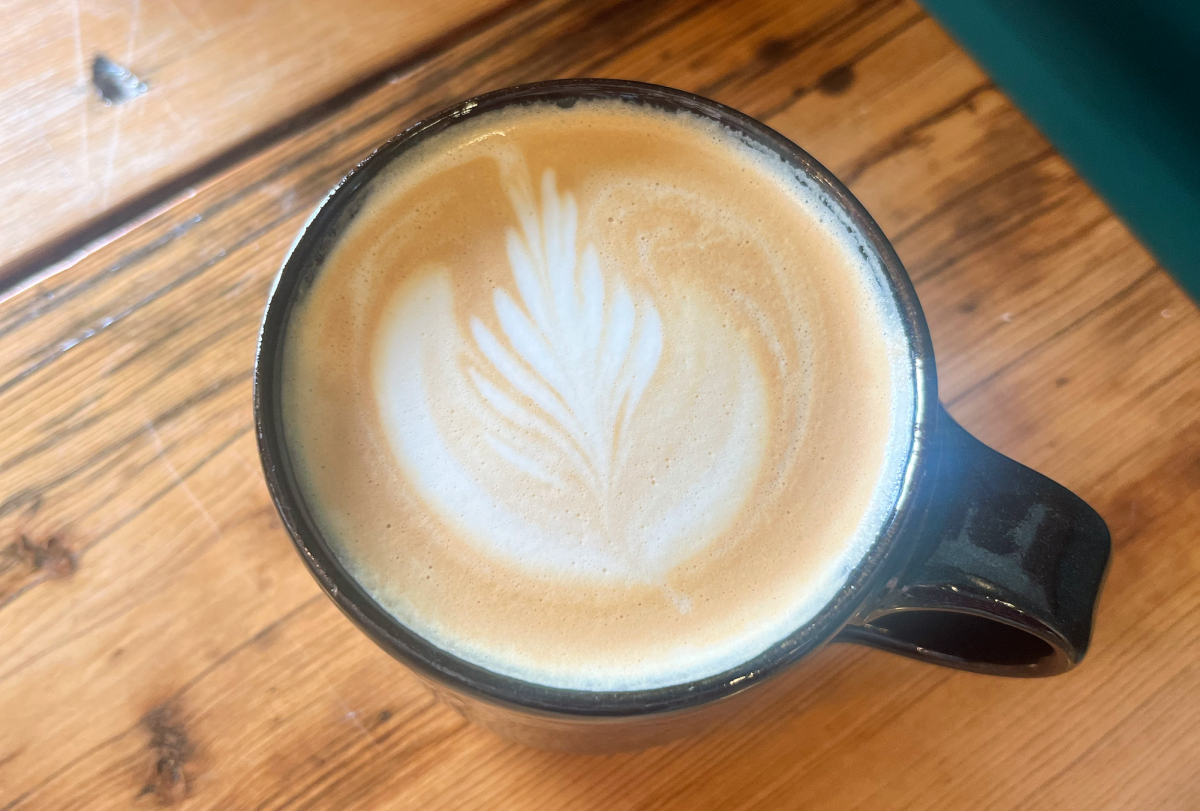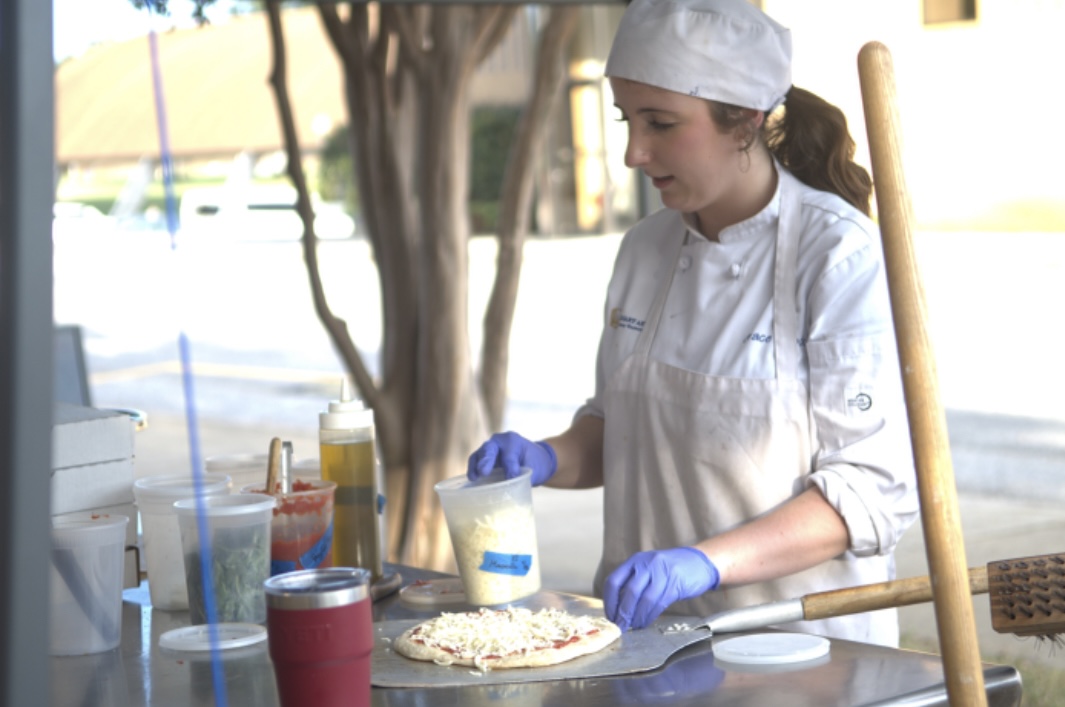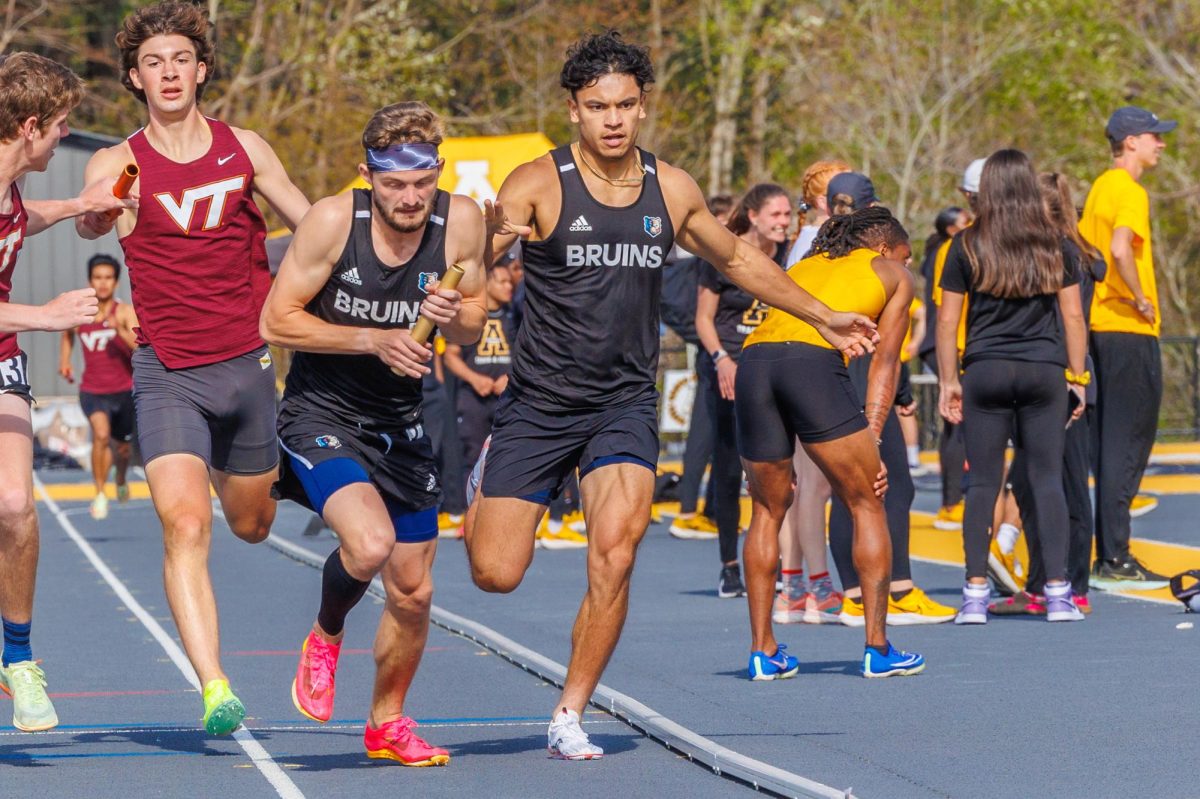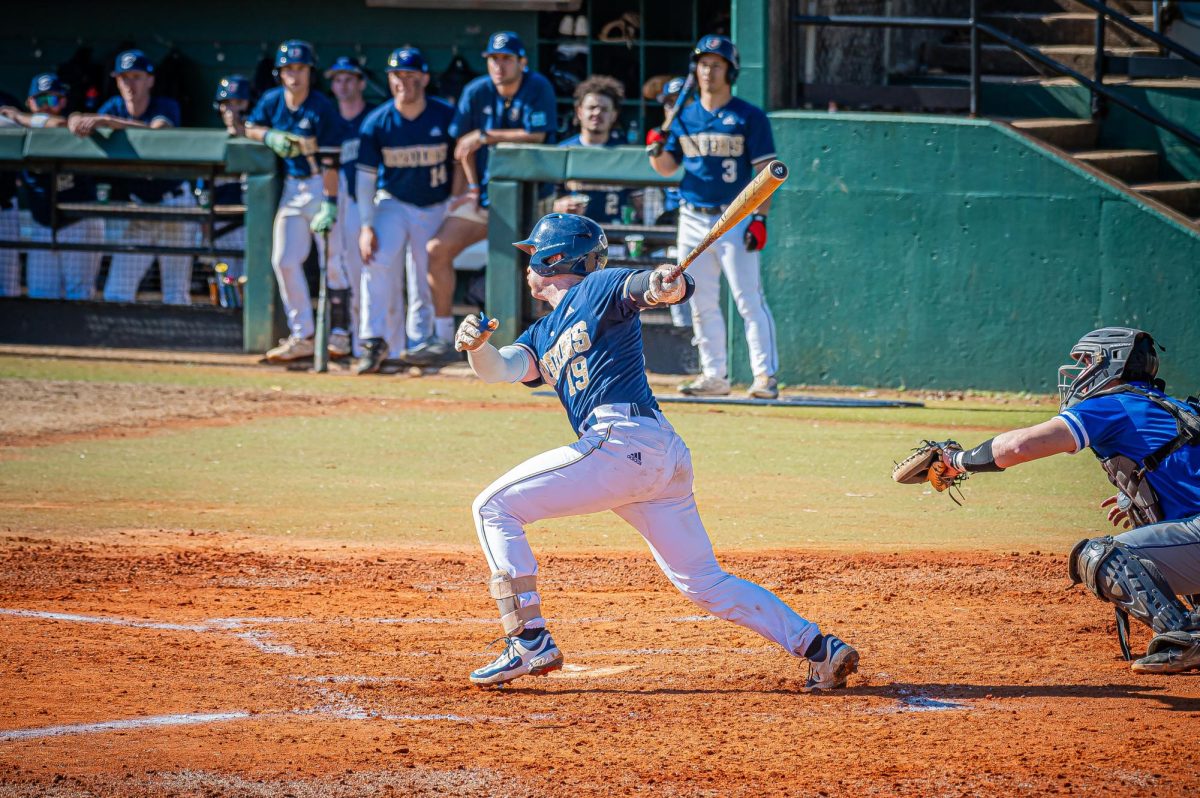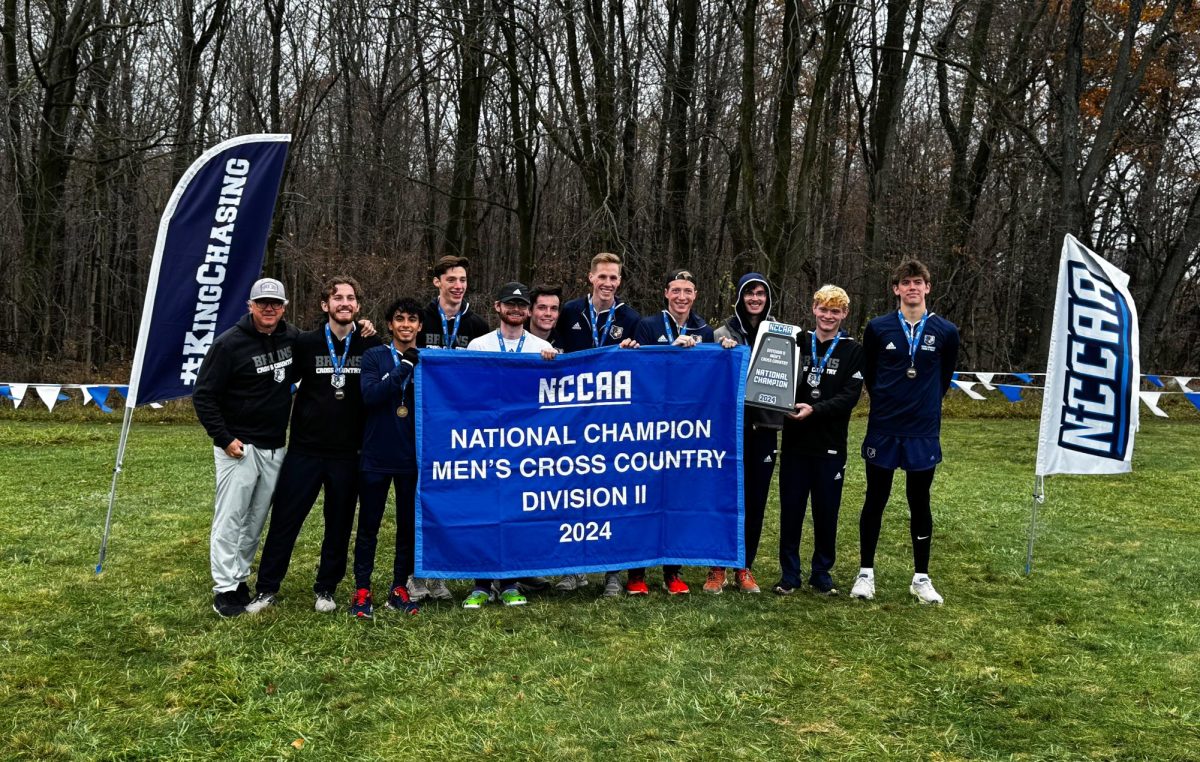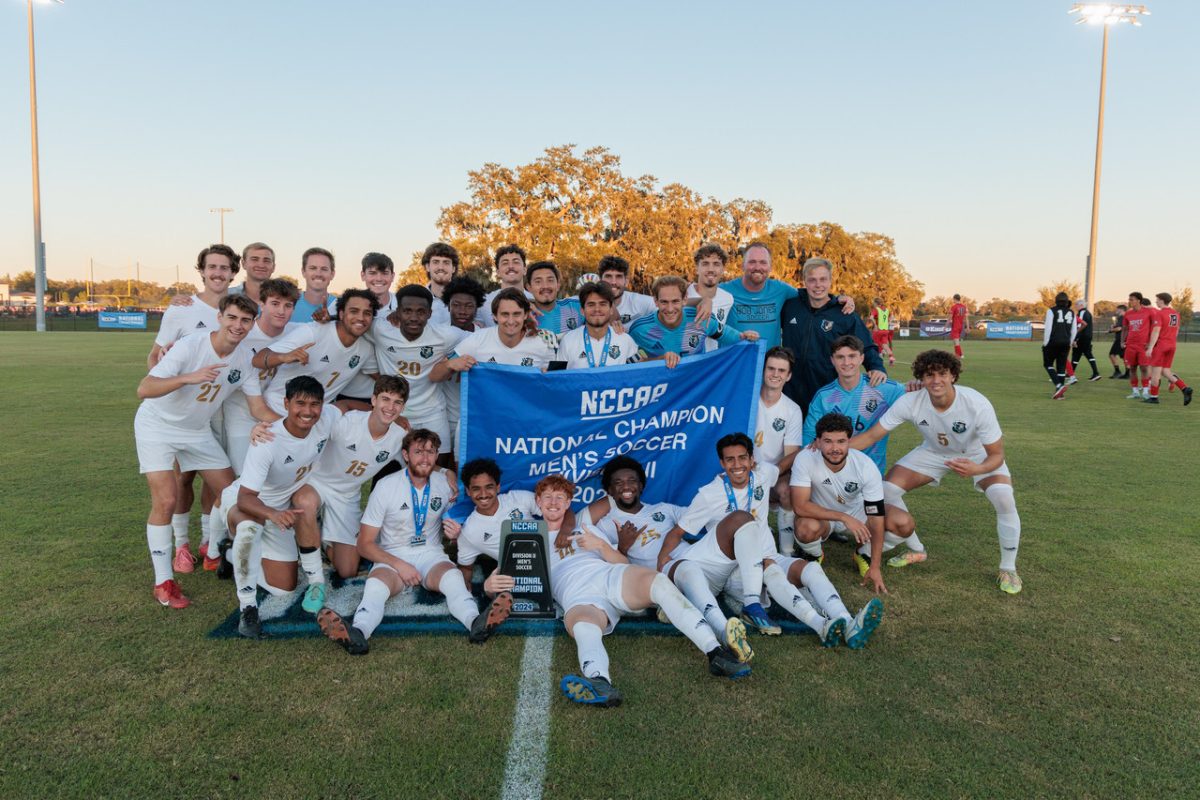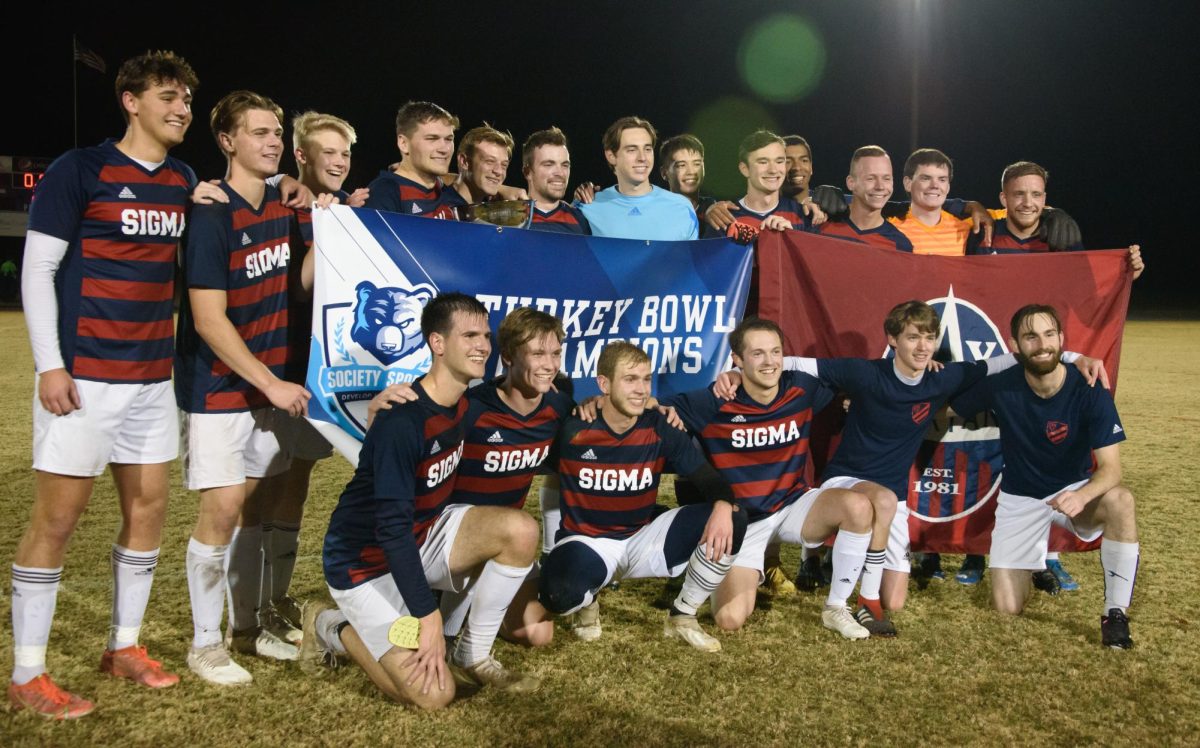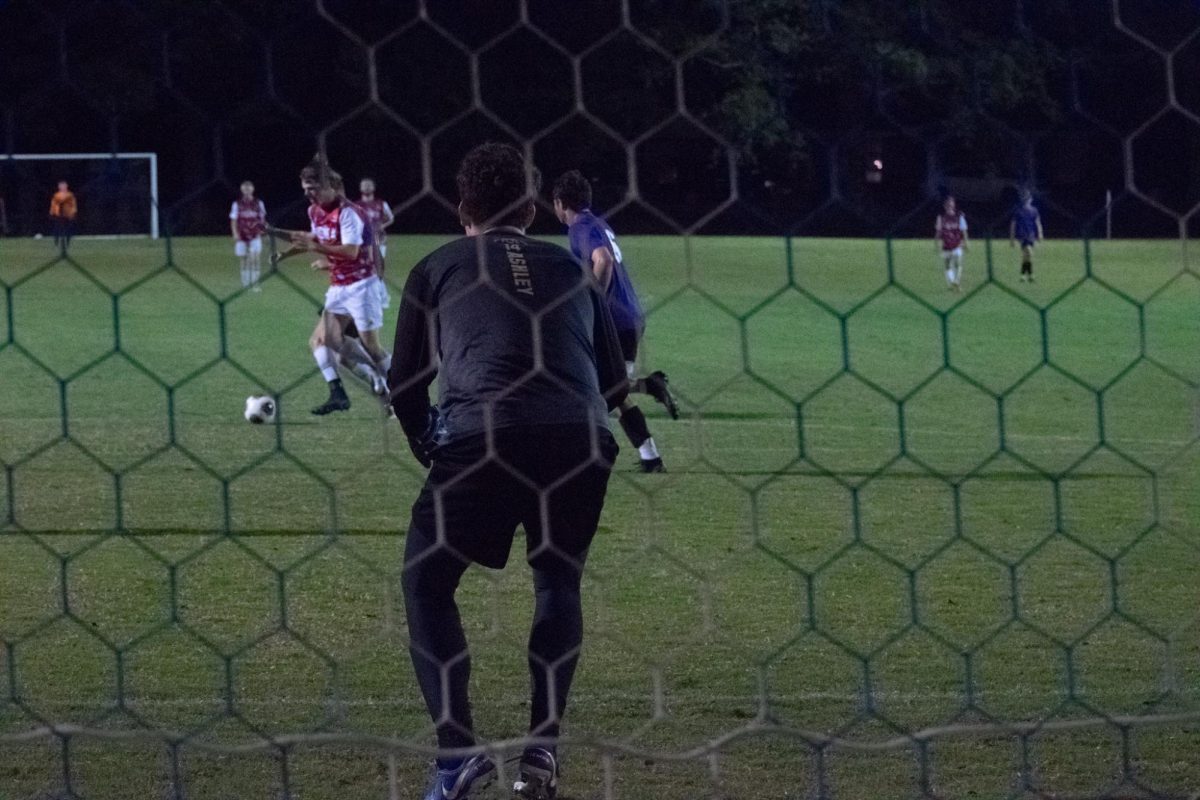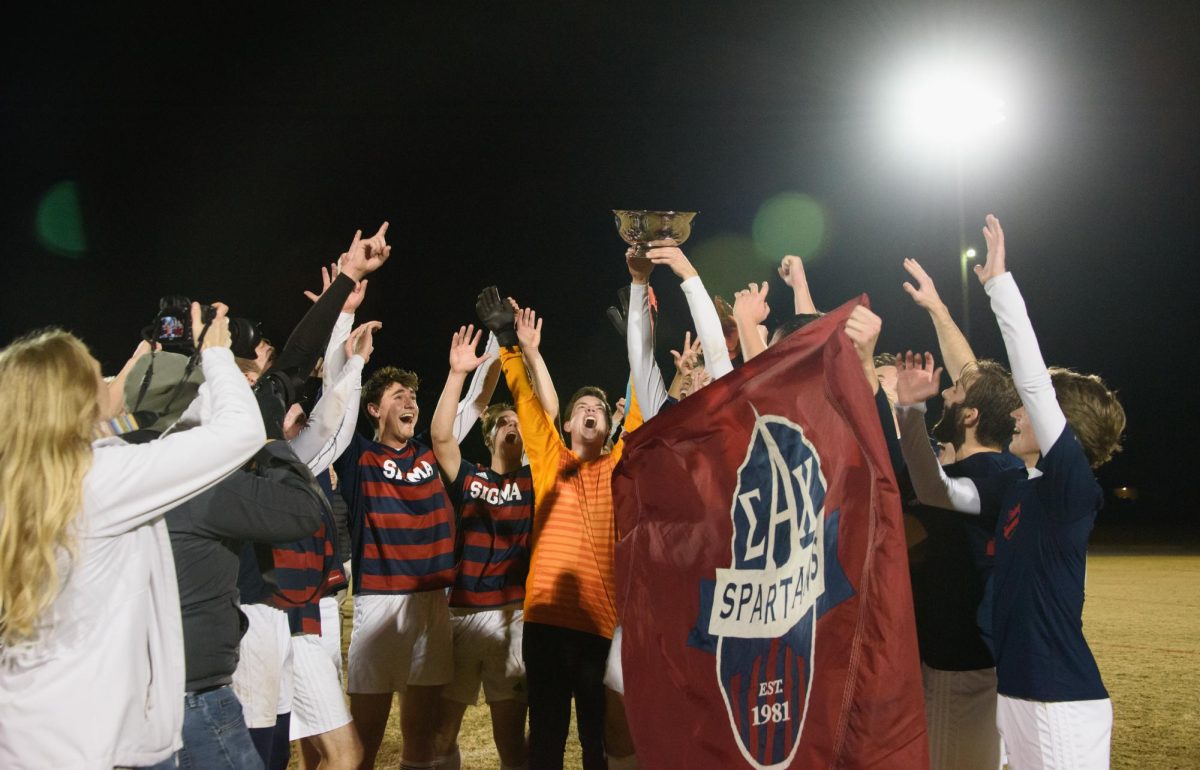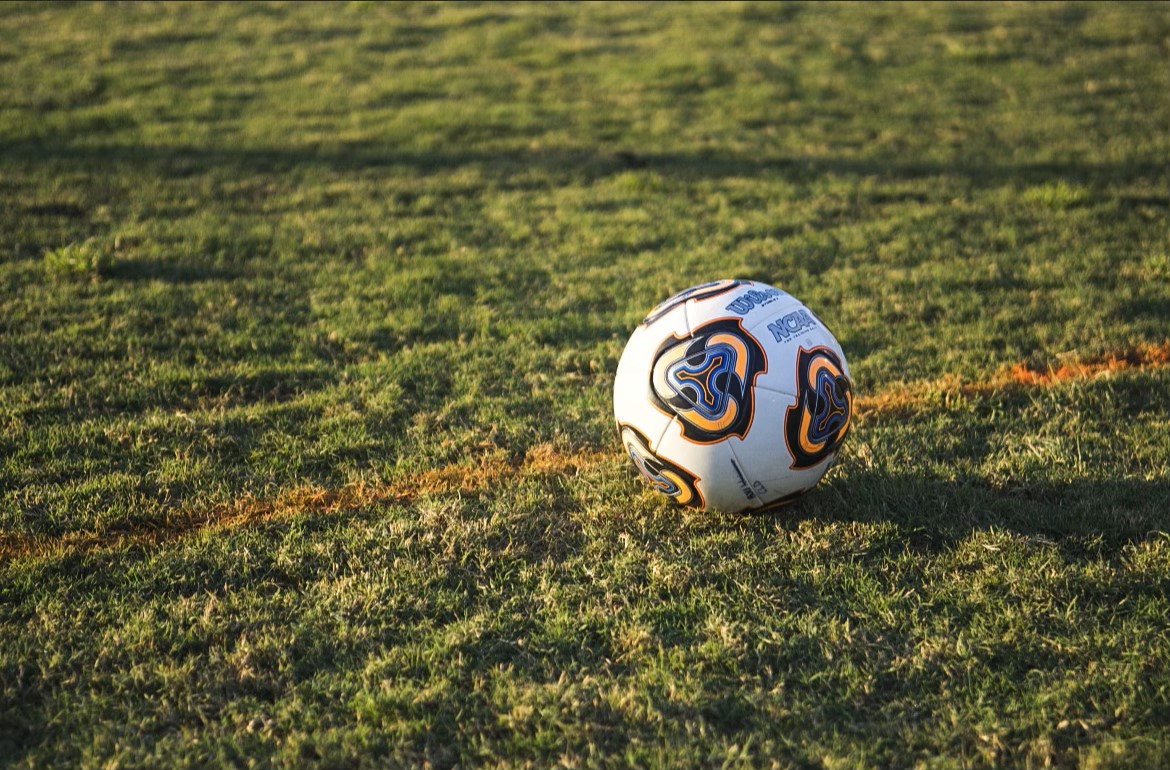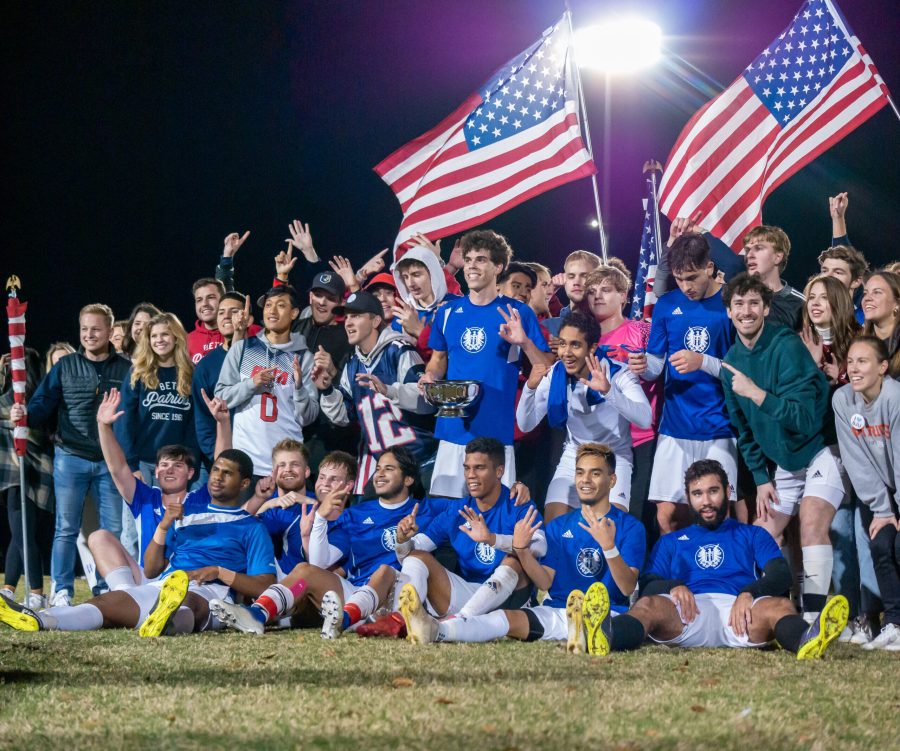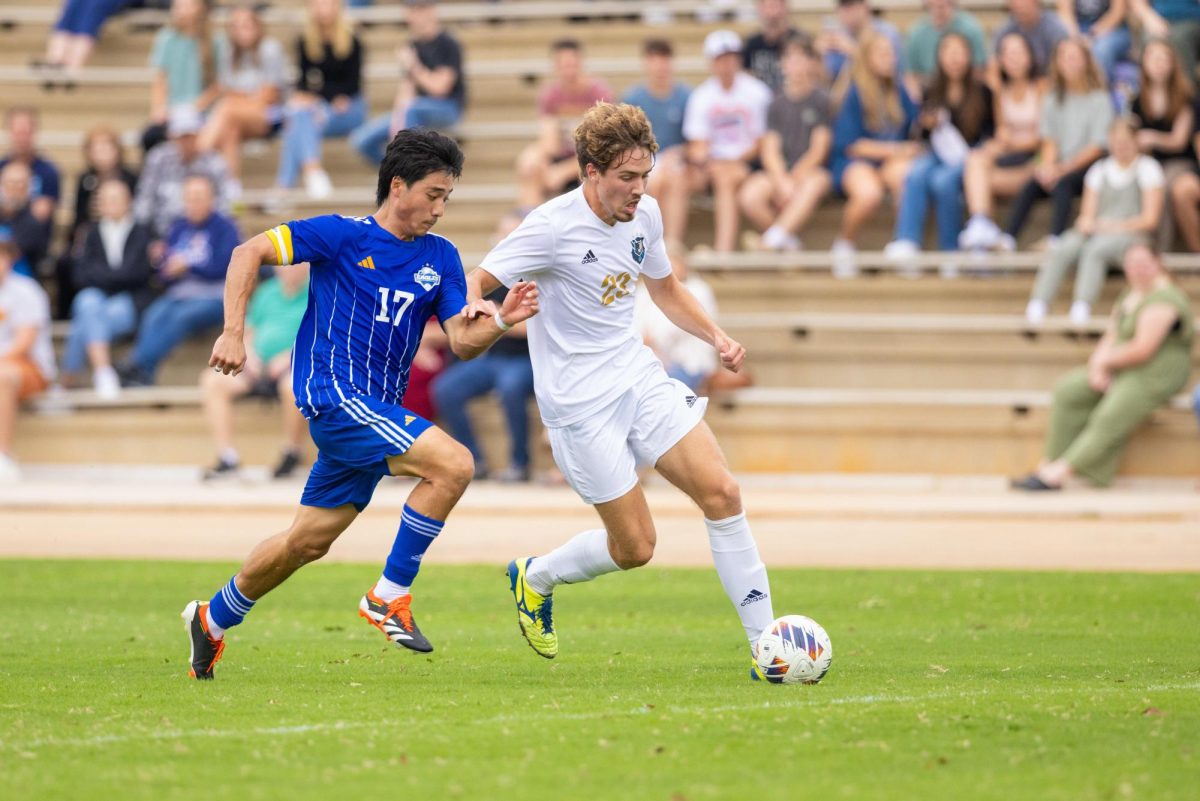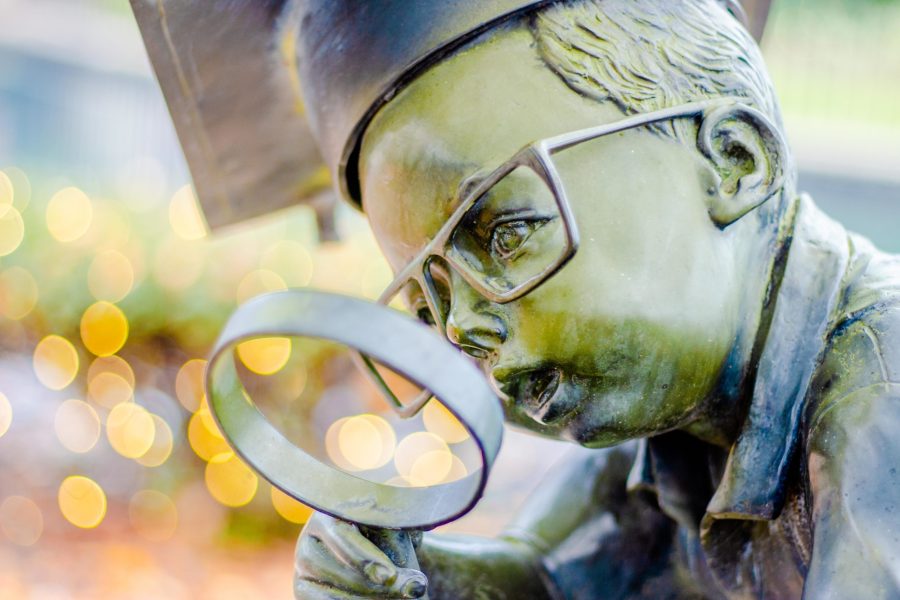Some of the most iconic photo spots on campus – Rodeheaver Auditorium and the Bridge of Nations – feature unique works of art with an interesting history many may not know.
At the Bridge of Nations, students walk by two of these works of art on a daily basis: the two bronze statues, “School’s In” and “School’s Out.” On the Student Mall side, the “School’s In” statue is a little boy wearing an academic cap and gown while sitting on top of a globe. The little boy is holding a magnifying glass and looking closely at a book.

Photo: Andrew Pledger
On the Alumni side, the “School’s Out” statue features a boy and girl holding hands and playing on top of a tree stump while their schoolbooks lie nearby on the ground. Both statues were suggested by former president of the University Bob Jones III, who received his inspiration from a store in Atlanta. According to BJUtoday, Jones said, “At first, I had something regal in mind, like an angel or a soldier. But after seeing these two statues in a store in Atlanta, I knew they would be perfect.”
“School’s In” was dedicated to former dean of the College of Arts and Science and chairman of the modern language department, Dr. Guenter Salter, who died in 2002. This statue was given by Dan Wooster, a former faculty member, and the plaque reads that Salter “tolerated in himself and in others only the best and highest for Jesus Christ” in his 33 years of ministry at BJU.
“School’s Out” was dedicated to former School of Education faculty member, Dr. Charles Joss, who died in 1987. This statue was given by his wife and daughters, and its plaque includes Proverbs 13:19: “The desire accomplished is sweet to the soul.” Both statues represent the spirit of the staff and students of BJU.

Photo: Andrew Pledger
Upon entering Rodeheaver Auditorium, visitors, students and staff are met with two large lion statues in the upper lobby. These statues, the “resting lion” and the “roaring lion,” are props from the set design for BJU’s production of The Winter’s Tale that premiered in 1993, with later productions in 2002 and 2010.
“The resting lion and the roaring lion were symbolic of King Leontes’ wide emotional swings in the play,” Dr. Darren Lawson, dean of the School of Fine Arts and Communication said. “In the first part of the play, the king roars with jealousy; however, in the second half of the play, the king learns to forgive, which the resting lion represents.”
Designed by stage artist and retired art faculty member Harrell Whittington, both statues were created out of fiberglass for the production.
After the production in 2010, these statues went into retirement, being placed on display in the lobby of Rodeheaver. Over the course of years, during Artist Series or various other productions, both lions have become the prime photo spot for couples, families and friends.

